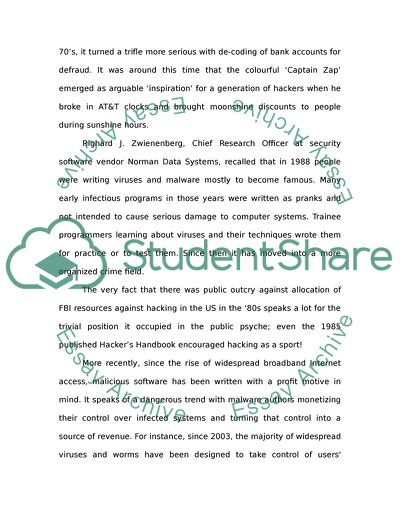Cite this document
(Cyber Chase Challenges Case Study Example | Topics and Well Written Essays - 1250 words, n.d.)
Cyber Chase Challenges Case Study Example | Topics and Well Written Essays - 1250 words. https://studentshare.org/information-technology/1750582-the-malware-writers-and-hackers-of-today-are-more-malicious-and-more-intrusive-than-those-of-the-twentieth-century
Cyber Chase Challenges Case Study Example | Topics and Well Written Essays - 1250 words. https://studentshare.org/information-technology/1750582-the-malware-writers-and-hackers-of-today-are-more-malicious-and-more-intrusive-than-those-of-the-twentieth-century
(Cyber Chase Challenges Case Study Example | Topics and Well Written Essays - 1250 Words)
Cyber Chase Challenges Case Study Example | Topics and Well Written Essays - 1250 Words. https://studentshare.org/information-technology/1750582-the-malware-writers-and-hackers-of-today-are-more-malicious-and-more-intrusive-than-those-of-the-twentieth-century.
Cyber Chase Challenges Case Study Example | Topics and Well Written Essays - 1250 Words. https://studentshare.org/information-technology/1750582-the-malware-writers-and-hackers-of-today-are-more-malicious-and-more-intrusive-than-those-of-the-twentieth-century.
“Cyber Chase Challenges Case Study Example | Topics and Well Written Essays - 1250 Words”. https://studentshare.org/information-technology/1750582-the-malware-writers-and-hackers-of-today-are-more-malicious-and-more-intrusive-than-those-of-the-twentieth-century.


